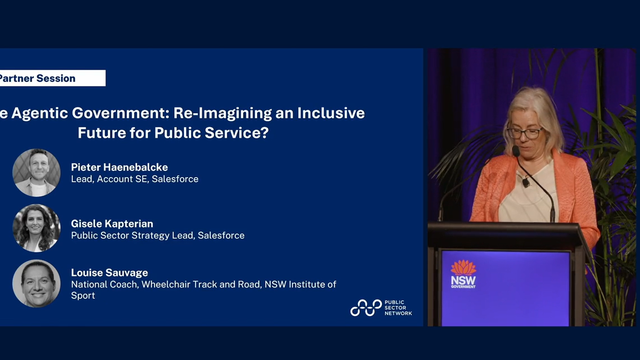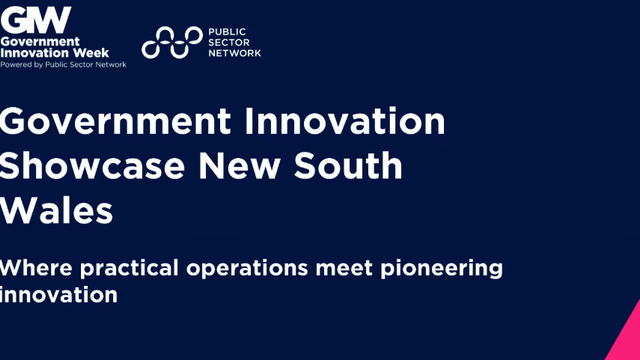
Bernadette Kenny
General Manager, Primary Care Innovation and Development
WA Primary Health Alliance
At the recent Improving Patient Outcomes and Experience event, we heard from Bernadette Kenny, General Manager, Primary Care Innovation and Development, WA Primary Health Alliance as she dived into how to create and sustain an engaged and caring workforce. In this article she explores:
- Upskilling and training staff to deliver patient-centric care
- Implementing mentoring, training and upskilling programs
Establishing a high
performing healthcare
alliance
Alliance was established in 2015, and as Bernadette Kenny , the General Manager of Primary Care Innovation and Development at the Alliance says, the purpose of establishing it was to be “the operator of Western Australia’s three primary health networks. So our role really is to improve and empower the WA primary health workforce to achieve the highest standards in quality, safety and patient-centred care.” To be able to do this, the two global standards that are used in healthcare are the Quadruple Aim [1] – which as the name suggests is about having four equal goals – and the 10 Building Blocks of High Performing Primary Care [2] , which is a conceptual model.
Both of these standards and concepts are about achieving high performing care, but since the Alliance was set up to work with GP clinics, “we were very curious at the beginning about what defined a high performing general practice.” Of the 10 building blocks as part of the model, “the first four are foundational to support the other six to be high performing primary care. But how do we really go about creating and sustaining an engaged and caring workforce?”
To answer that question, the Alliance undertook a small study with Curtin University. They identified 25 GPs and conducted “semi-structured interviews with practice staff,” mostly around “what does it take to implement high performing primary care in WA?” The overwhelming response from the 25 interviews was that care needs to be customised and “right for our environment.” The global and other standards and helpful and useful, “but they should not to be prescriptive.” In other words, use them as a guide only. They also talked about “needing much better data around their patient base.”
[1] https://digital.ahrq.gov/acts/quadruple-aim
[2] https://www.aci.health.nsw.gov.au/nhn/health-professionals/implementation-advice/the-10-building-blocks-of-high-performing-praimary-care
”
There is a real thirst for knowledge from general practice leaders about how to become better leaders in their practice. It’s not just about having an effective practice or business manager; it’s about having their reception staff, their clinicians and all members of their team participating as part of that leadership team and working to improve their whole practice.
The next part of the process was to write to all the GP practices “where we knew there was significant disadvantage and poor health outcomes.” If the goal of the alliance was to create high performing practices and standards, then by seeking out the practices with poorer outcomes, “we offered to tailor programs for them and to coach them to meet their needs.” The goal was to “engage with 10% of practices in WA in this really intensive way, but more than 10% of practices participated.”
From the outset, the Alliance realised that “one size wouldn’t fit all,” especially for practices with poorer outcomes because all of their circumstances would be different. So they asked the practices to conduct a “self-assessment, which we mapped with a development plan for their practices.” Over the “last five years”, various analyses and training programs have been conducted to improve their outcomes. But almost more importantly, from the leadership, clinical and operational teams of each practice, there is now a rich source of information and a very well defined set of requirements:
- The leadership teams – have a “real thirst for financial and business knowledge, and leadership skills.” They want to know how to improve their “HR and recruitment processes” and how to generally achieve better quality improvement.
- The clinical teams – want a better understanding of how to “manage patients with chronic disease in a patient-centred way, how they could work with patients with really complex health conditions.”
- The operational teams – were mainly concerned with “customer service, first aid training and how to understand triage methodology.”
Implementing change
Much of the model of the WA Primary Health Alliance is based on the model and work of “the Western Sydney PHN, who really helped mentor us in the early days.” They helped the Alliance realise that to be a high performing practice “you needed engaged leadership,” with is the first of the 10 Building Blocks. “So we brought all of the practice leaders together to Perth to participate in a leadership series.” At that gathering they discovered that practices really want to improve and need to do so as a collective.
To get to that point of improvement, the Alliance created – with the assistance of experts at the Western Sydney PHN – “leadership master classes, and private virtual mentoring programs.” Some of these are aimed at the whole practice whilst others focus on specific people or functions. “We provide them with training around IT systems and how to extract quality data, and we also give them some business advice and assistance.” In some cases it is also about getting people together and showing them in a tangible way how the building blocks and goals fit together, and what they need to do to achieve their aims. “It’s what we call cross-pollination,” getting everyone from different areas to work together. The next part of the program is to create “communities of practice” so that the changes and lessons can be truly implemented, and so that there are people who are there to motivate and inspire others.

































